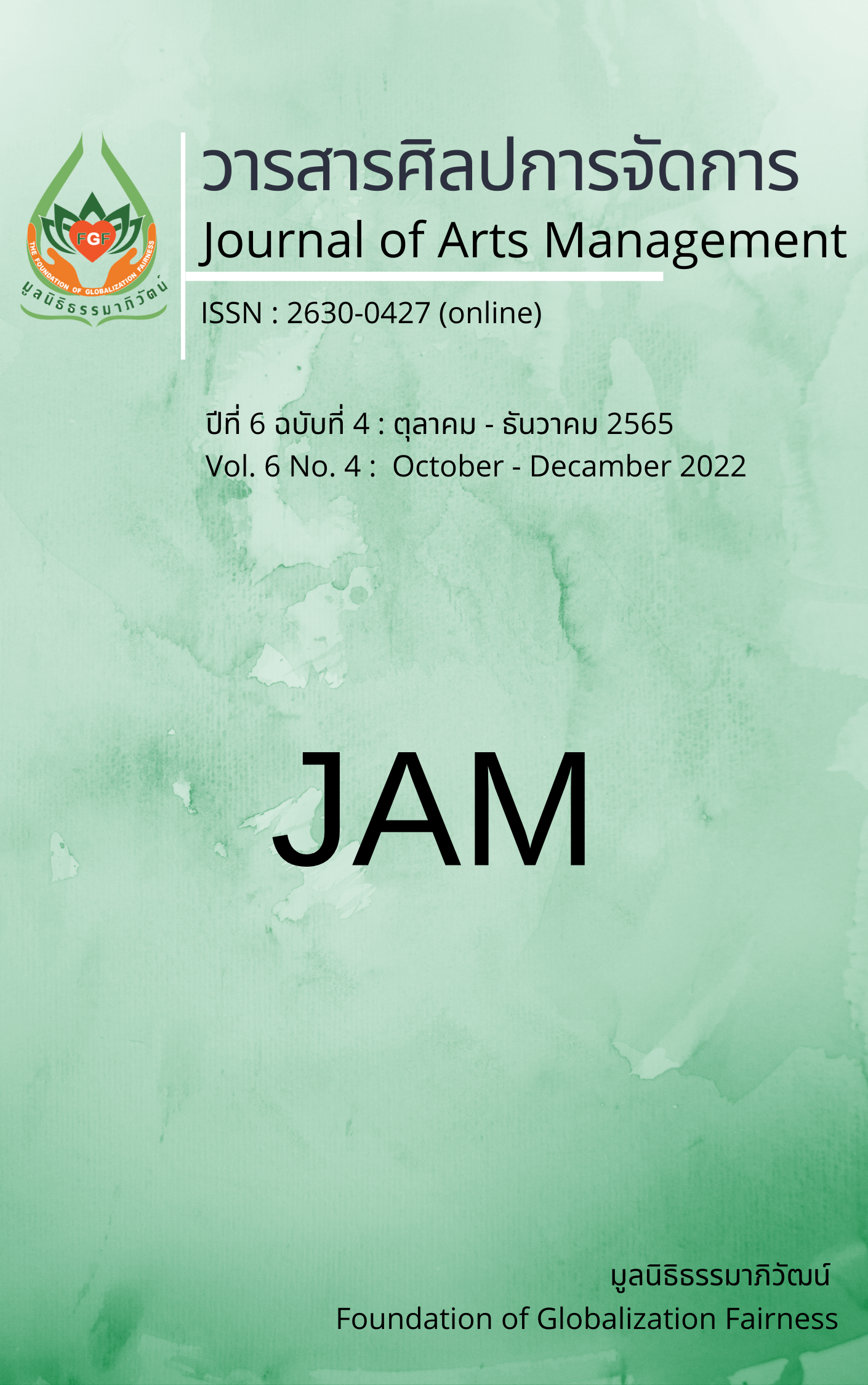A Study of Special Orthographic Words of the Tai Ahom Soul-Calling Manuscripts “Khon Ming Lung Phai”
Main Article Content
Abstract
The purposes of this research were to 1) study the form of special orthographic words found in the Tai Ahom soul-calling manuscript "Khon Ming Lung Phai"; 2) categorise and analyse special orthographic words from Khon Ming Lung Phai manuscripts; and 3) use the special orthographic words as a device to help date the age of Tai Ahom manuscripts. This research used documentary research as a qualitative method to study the 104 pages of Khon Ming Lung Phai manuscripts by translating, categorising, and analysing the data of special orthographic words. Ultimately, the data was compiled in a descriptive analysis and concluded in the form of the research article.
The results showed that special orthographic words used in the Tai Ahom Soul calling manuscripts "Khon Ming Lung Phai" appeared in the form of abbreviated words, which can be divided into five different forms: 1) deleting the similar alphabet, 2) using a diacritic mark (Nikhahit) to replace ending consonants, 3) Using for writing duplication words, 4) using a unique word form, and 5) writing the vocative word as a particle. The knowledge of special orthographic words would make it possible to understand the meaning of abbreviations which have remained unknown for quite a number of Tai Ahom Manuscripts. Moreover, the study showed that the special orthographic words could help to date the age of the Tai Ahom manuscripts by comparing the forms of the special orthographic words found. Last but not least, knowing the Tai Ahom special orthographic words would be profoundly constructive for scholars interested in Tai Ahom manuscript studies as a guideline to help in reading, translating, and comprehending many invaluable stories of Tai Ahom manuscripts in the future.
Article Details

This work is licensed under a Creative Commons Attribution-NonCommercial-NoDerivatives 4.0 International License.
Views and opinions appearing in articles in the Journal of Arts of Management It is the responsibility of the author of the article. and does not constitute the view and responsibility of the editorial team I agree that the article is copyright of the Arts and Management Journal.
References
Barua, B. K., & Phukan, N. N. Deodhai. (1964). Ahom Lexicons, Based on Original Tai Manuscripts. Department of Historical and Antiquarian Studies Assam.
Bandhumetha, B. (1961). Kalemantai. Samakhom Phahsa lae Nangsue.
Gait, Sir. E. (1905). A History of Assam. (Revised and enlarged by B.K. Barua and H.V.S. Murthy, 1993). Calcutta: Thacker Spink and United Commercial Press.
Gogoi, P. (1968). The Tai and the Tai kingdoms; with a fuller treatment of the Tai-Ahom kingdom in the Brahmaputra Valley. Department of Publication, Gauhati University.
Grierson, Sir G.A. (1903). Linguistic Survey of India, Vol. 2: Mon-Khmer and Siamese-Chinese Families. Calcutta: Government of India, Central Publication Branch.
Jayadat, K. (2013). “Current status of knowledge of the study of Tai Ahom Manuscripts” In Duayrak 2: “Chon Chat Tai”, Essays for Professor Chatthip Nartsupha at 72. (pp. 58-77). Samnakphim Sangsan.
Khanitthanan, W. (1983). Historical Linguistics: The Evolution of Thai and English Languages. Thammasat University.
Khanitthanan, W. (1986). Wiwatthanakarn Phithi Thamkhwan Khong Khon Thai. Unpublished research report to Thai Khadi Institute, Thammasat University.
Khon Ming Lung Phai [c18th century], British Library, EAP373/18/8. https://eap.bl.uk/archive-file/EAP373-18-8
Khon Ming Lung Phai [c18th century], British Library, EAP373/25/19. https://eap.bl.uk/archive-file/EAP373-25-19
Lertleumsai, R. (2001). Faa – Khwan - Muang, ancient Tai worldview: Based on Ahom Manuscripts. Witheethas.
Li, Fang-Kuei. (1977). A Handbook of Comparative Tai. University Press of Hawaii.
Morey, S. (2005).The Tai Languages of Assam--a Grammar and Texts. Pacific Linguistics, Research School of Pacific and Asian Studies, the Australian National University.
Morey, S. (2015). Metadata and endangered archives: Lessons from the Ahom Manuscripts Project. In M. Kominko (ed.), From Dust to Digital: Ten Years of the Endangered Archives Programme, (pp. 31-65). Open Book Publishers.
Mvng Mung Lung Phai [c18th century], British Library, EAP373/51/11. https://eap.bl.uk/archive-file/EAP373-51-11
Na Nagara, P. (1998). Tuo akson Tai Neu lae Tai Ahom. In Saraniphon Prasert Na Nagara. (pp. 82-92). Kasetsart University.
Na Nagara, P. (2019). Pojjananukrom Thai Ahom-Thai. (2nd ed.). Faculty of Archeology, Silpakorn University.
Nartsupha, C., & Wichasin, R. (2009). Kansuksa Prawattisat Tai Ahom. Sangsan.
Terwiel, B. J. (1988). Reading a dead language: Tai Ahom and the dictionaries. In D. Bradley, E. J. A. Henderson & M. Mazaudon (eds.), Prosodic Analysis and Asian Linguistics - to Honour R. K. Spriggs, (pp. 283-296). Canberra: Australian National University.
Terwiel, B. J. (1989). Ahom Documents: How to Read and Its Outcome in Promoting Comparative Thai Studies. In papers presented at the Seminar on Tai-Outside the Country: Boundary of Knowledge. (pp. 119-126). Historical Society under the Royal Patronage of H.R.H. Princess Maha Chakri Sirindhorn.
Terwiel, B. J., & Wichasin, R. (1992). Tai Ahoms and the Stars: Three Ritual texts to Ward off Danger. Cornell University.
Wichasin, R. (1986). Tai Ahom Palaeography[Master’s Thesis, Silpakorn University].
Wichasin, R. (1989). The Calling of the Soul during the Coronation of Suahetpungfa in PASA CARUK: Chabub Guru Ramluek. (pp. 115-137). Department of Oriental Languages, Faculty of Archaeology, Silpakorn University.
Wichasin, R. (2021). Akharawithi Piset Nai Ekasarn Boran Khong Thai. Wanida Printing.
Wimonkasem, K. (2011). Tamra Rian Akson Thai Boran. Silpakorn University.


